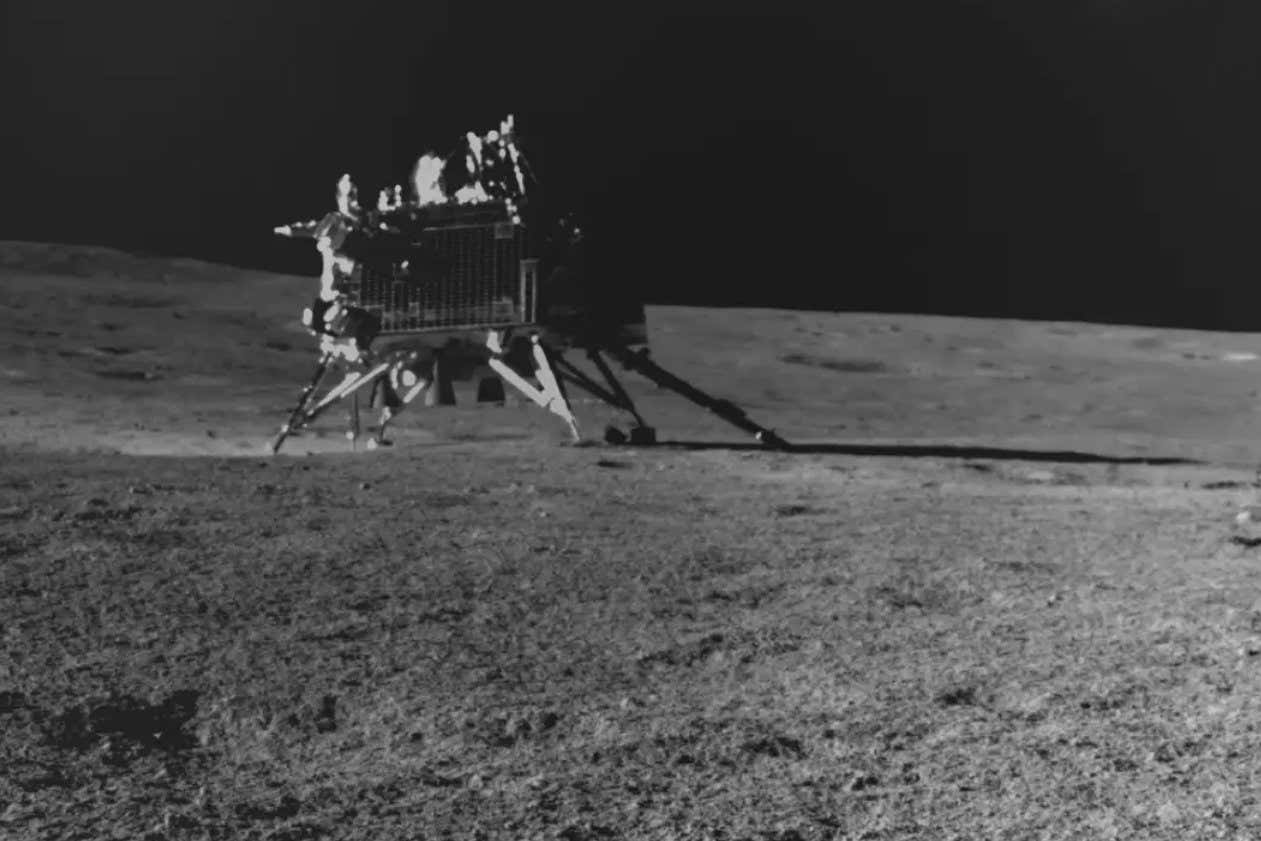The Chandrayaan-3 mission is officially complete, with both the rover and lander powering down for the lunar night, but the solar-powered hardware is expected to reawaken at sunrise
By Matthew Sparkes
4 September 2023
India’s Vikram lander on the surface of the moon
ISRO
India’s groundbreaking lunar exploration mission Chandrayaan-3 is officially over, with both the rover and lander entering “sleep mode” and preparing for sunset and freezing conditions that could destroy their electronic components. But engineers from the Indian Space Research Organisation (ISRO) are confident that the rover will boot up once more when the sun rises on the moon in two weeks’ time.
The mission gently touched down its Vikram lander near the moon’s south pole on 23 August, making India the first country to explore the region. A six-wheeled rover called Pragyan, which weighs just 26 kilograms, rolled on to the surface and the two solar-powered craft had a single period of daylight – around 14 Earth days – to carry out experiments.
Chandrayaan-3 quickly began providing new scientific data from its numerous instruments, including devices on the lander called ChaSTE, which sampled the temperature of the moon dust below the surface, and ILSA, which recorded seismic activity.
Advertisement
The Vikram lander also made a second soft touchdown on the moon in a “hop” experiment, ISRO announced in a tweet today. Engineers on Earth instructed it to fire its engines, lift off to a height of 40 centimetres and move 30 to 40 centimetres laterally before softly landing again. A video of the test shows the tracks left by the rover quickly being obscured by a cloud of moon dust as the engines fire, then appearing slightly further away once the lander had touched down, cut its engines and allowed the dust to settle.
ISRO said that the test “enthuses future sample return and human missions”, both of which would require not only a soft landing, but also a subsequent take-off for return to Earth. After the successful hop, the lander redeployed the ramp for the rover and restarted its scientific payloads ChaSTE and ILSA for more measurements in the fresh location.
